GEAR | A Camping Game Changer, We Review The Jackery Explorer 500 Portable Power Station & Solar Panel
Now and again we get our hands on a camping product that blows us away and joins our “never camp without” list of camping essentials. The Jackery Explorer 500 Portable Power Station is one such product. Read on for our full review…
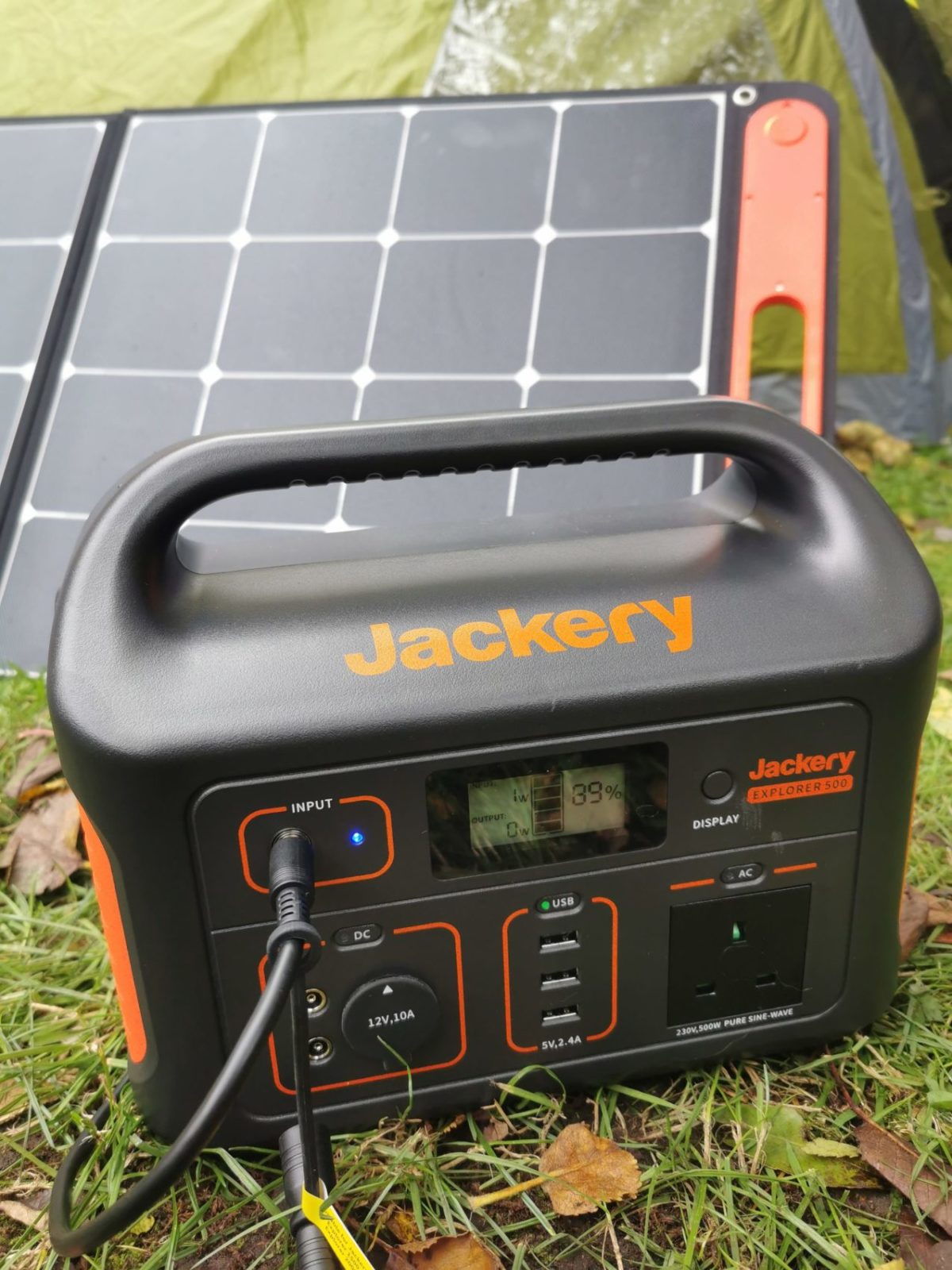
What is it?
- Jackery Explorer 500 Portable Power Station With Solar Panel £787.99
- Jackery SolarSaga 100W Portable Solar Panel £272
- Jackery EVA Carry Bag £59
Overall Rating  (4 / 5)
(4 / 5)
Features
- 518 Wh capacity
- 500 Watt output power
- 230 Volts
- Digital display
- 1 110V AC outlet
- 2 12V DC outlets
- 3 USB ports
- Pure sine wave inverter
- Integrated carry handle
- Built-in flashlight
- Fully mains charged in 6-7 hours
- Fully charged using compatable solar panel in approximately 9 hours in optimum conditions
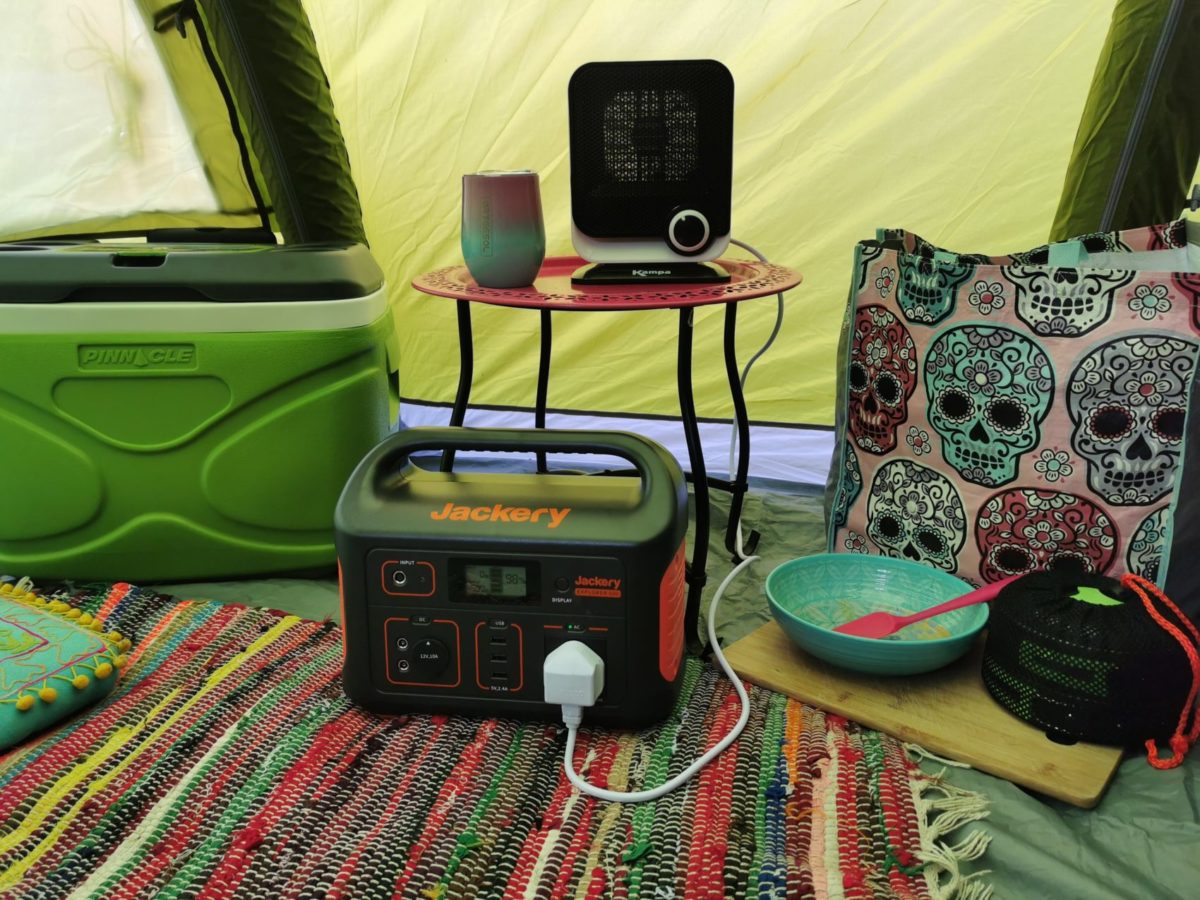

What we thought
Whilst the goal of a camping trip is usually to get away from it all and to immerse ourselves more fully in nature, the reality is that we still need to use some electrical devices.
Keeping essentials like our phones powered means we can follow route maps, GPS track our walks and trail runs, take photos and play music. We’re also likely to have camping lanterns, head torches and countless other devices that need charging via USB.
Much as I love disconnecting, I do also sometimes enjoy snuggling up in my sleeping bag in the evening and watching a film downloaded to my tablet, especially after a long day of walking during my many solo camping trips.
I’m not going to pretend I have a great understanding of volts and wattage or that I know what a ‘pure sine wave inverter’ is, so in this review, I’m more interested in the practical side of things and real-world performance.
My focus therefore is on how quickly it fully charges using mains vs. the solar panel, what electrical items can be charged with it, how long it provides reliable power for as well as how practical it is to use on a UK camping trip and around the home.
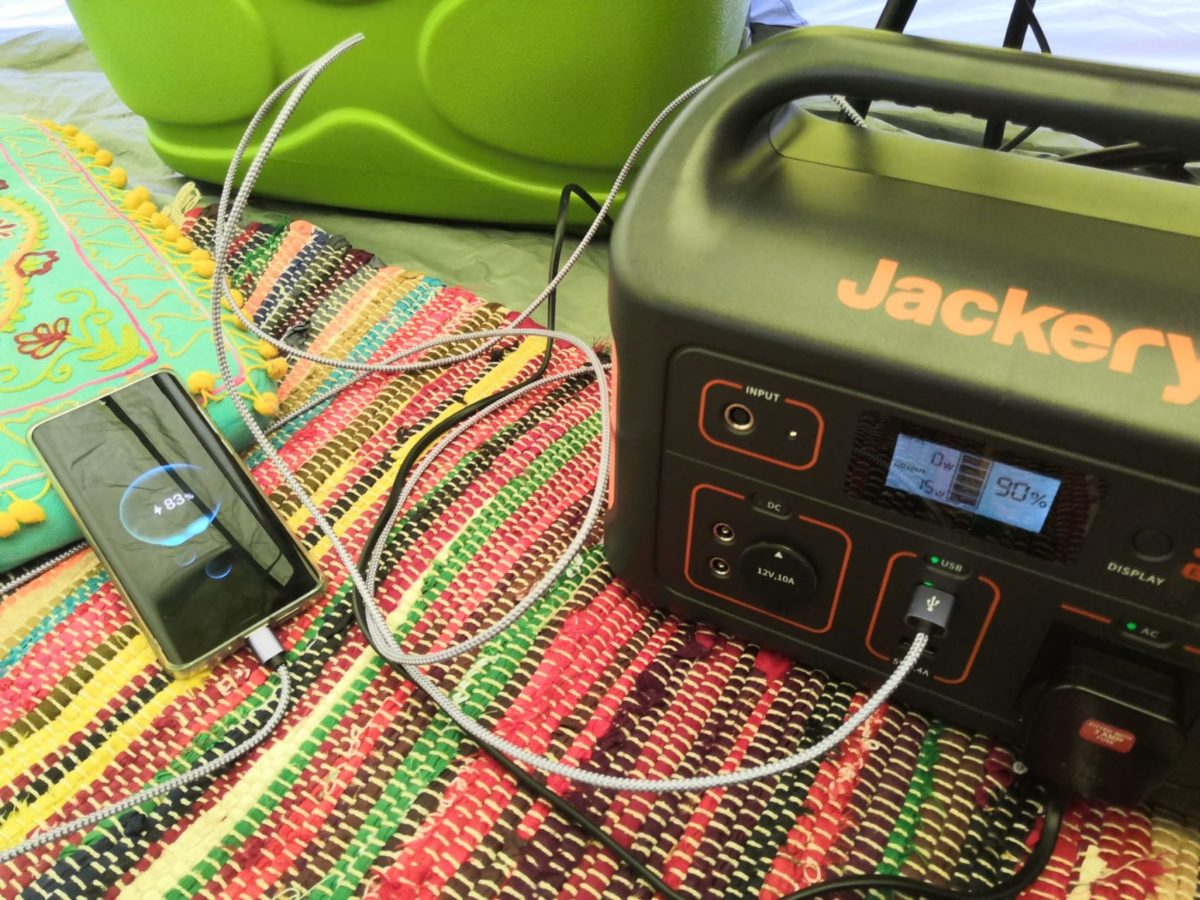

The Jackery Explorer range
Jackery was founded back in the US in 2012, launching here in the UK just last year and they specialise in providing outdoor green power solutions for explorers. There are 3 items in the Jackery Explorer range and the 500 sits firmly mid-range, alongside the Explorer 240 which comes in at a more affordable £259 and the top end Explorer 1000, which comes in at £1,099.
If you want to be able to keep the power station topped up whilst camping, you may want to consider the additional solar panel, which is sold separately for £259 and at 100 watts works in conjunction with all 3 power stations in the Explorer range.
The Explorer 500 is priced fairly competitively when compared against similar products from the likes of Bluetti, Totalcool and Ecoflow and whilst it’s somewhat rugged and designed for campers and van owners, it’s worth noting that the solar panel is splash-proof rather than fully waterproof.
Charging
Charging the unit when it first arrived was a simple matter of plugging it into the mains for a few hours. Based on a UK mains 84w input, It takes exactly 6 hours 40 minutes to reach a full charge from 0%.
You can also charge it using the in-car 12v AC converter or by using a solar panel and it comes with the cables necessary for mains and car charging, but once separately purchased, the solar panel includes the cable you’ll need to plug the panel in.
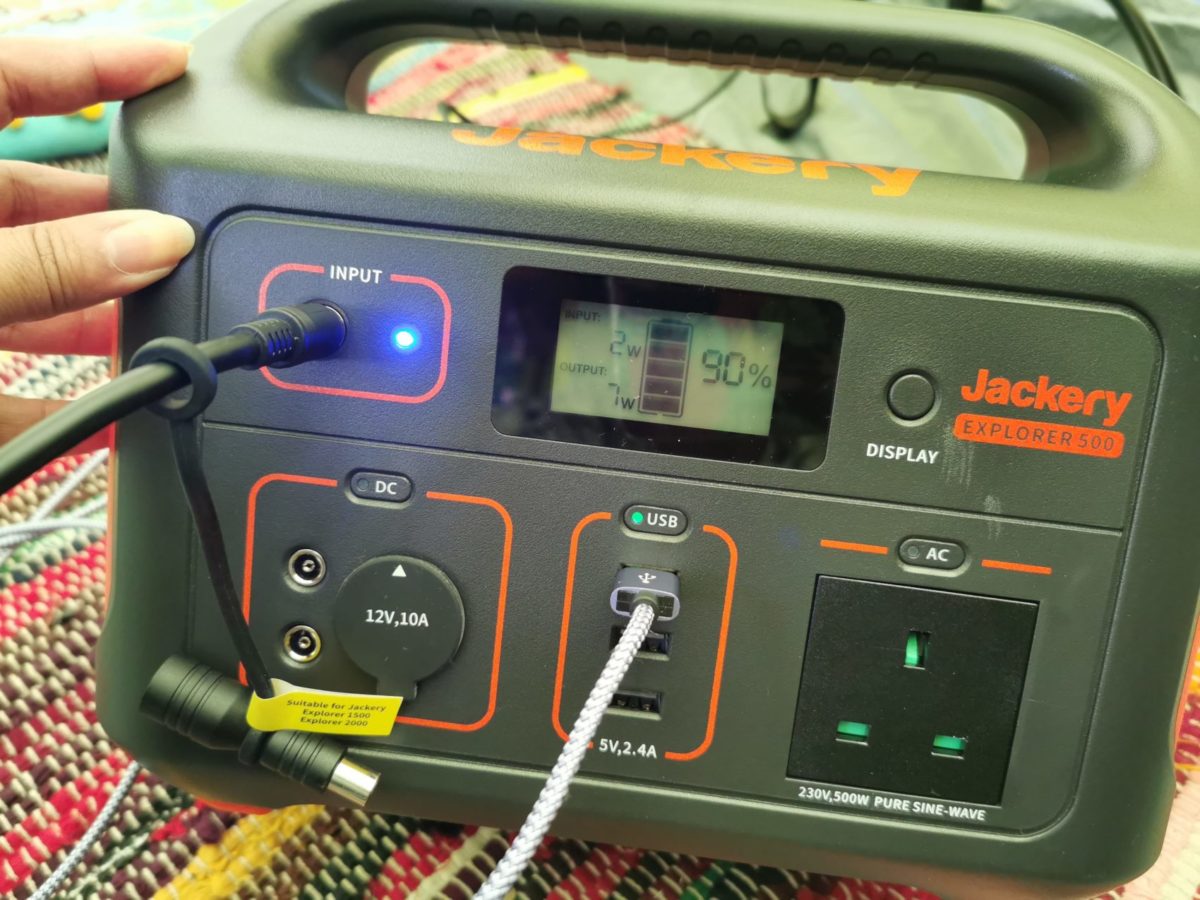

The digital display is really handy and very clearly shows how much charge is in the unit as well as the power input whilst charging and the power draw of any plugged-in devices.
Practicality
The design of the Explorer 500 has been really well thought out, and the integrated carry handle means it’s easy to move around, whilst all of those sockets (3 USB, 2 DC and 1 AC) make powering multiple devices easy.
500w of power means it’s capable of powering pretty much any small device, so when it comes to things like mobile phones, camping lanterns, smart watches and tablets, the Explorer 500 performs brilliantly and we found being able to charge multiple things at the same time was really useful.
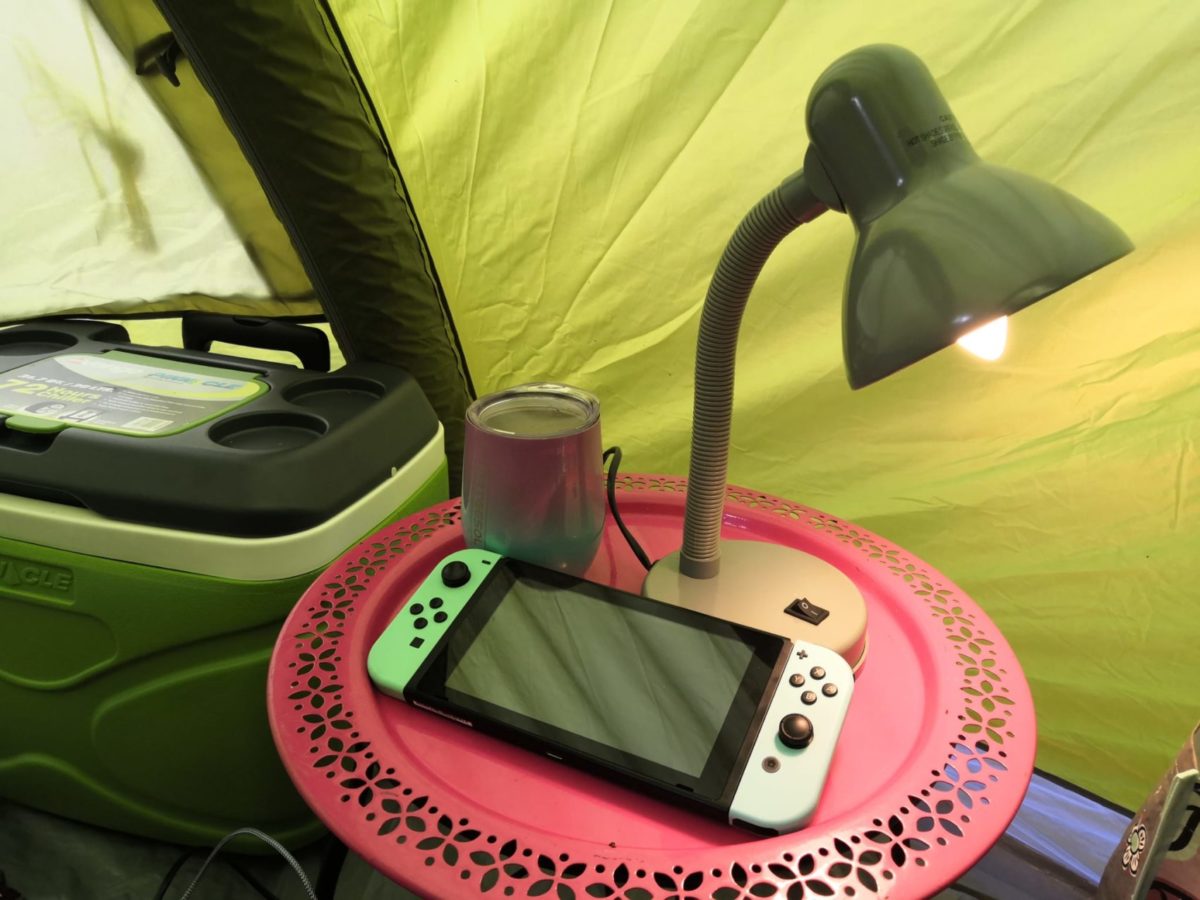

Performance
Here are some real-world performance examples from when we’ve used the power station both at home and on camping trips.
It took my Dell XPS laptop from 40% battery (whilst in continuous use) up to 100% in 1 hour 32 minutes and used 13% of the Explorer 500’s capacity to do so.
When charging a mobile phone alone, the draw is around 5w and a full mobile phone charge from under 10% battery up to 100% reduced the capacity of the Explorer 500 by 5%.
On a weekend camping trip, with normal use, charging all of our usual devices (phones, USB camping lantern, speaker and tablet), the power station didn’t come close to dying on us. The lowest we got the Explorer 500 down to over the course of a 2 night/3 day camping trip was 41%, without using the solar panel.
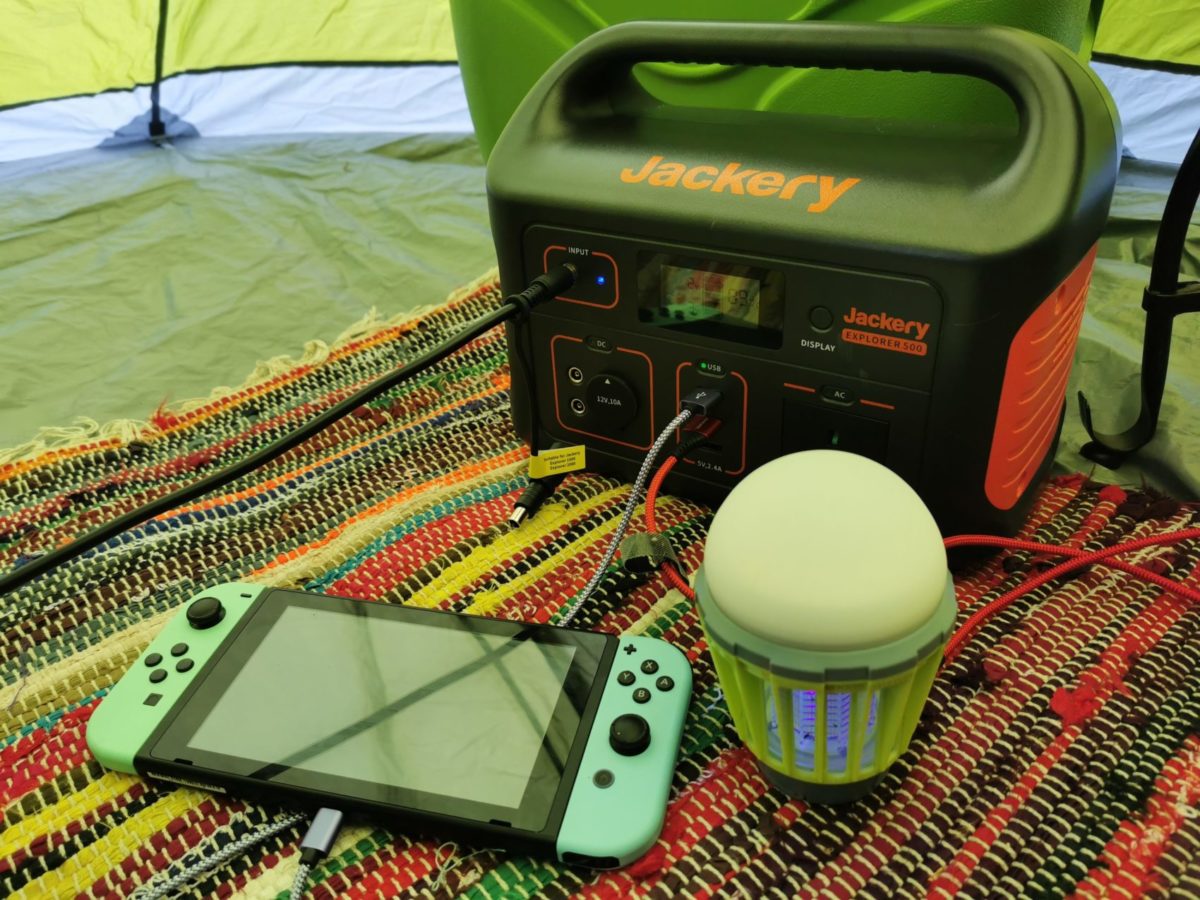

Of course, we also wanted to experiment to see exactly what it would or would not power, so we plugged in our electric Kampa Diddy camping heater, a high draw electrical appliance that we knew would push it to the max.
The power station will automatically cut out if you plug something in with too high a draw and we were surprised to find that it did manage to power our Kampa Diddy Electric heater on its lowest setting.
After 4 minutes of continuous use, the power station was down by 12%, so it shouldn’t be considered a replacement for an electric hookup and is not capable of running high-draw appliances like a kettle or fan heater.
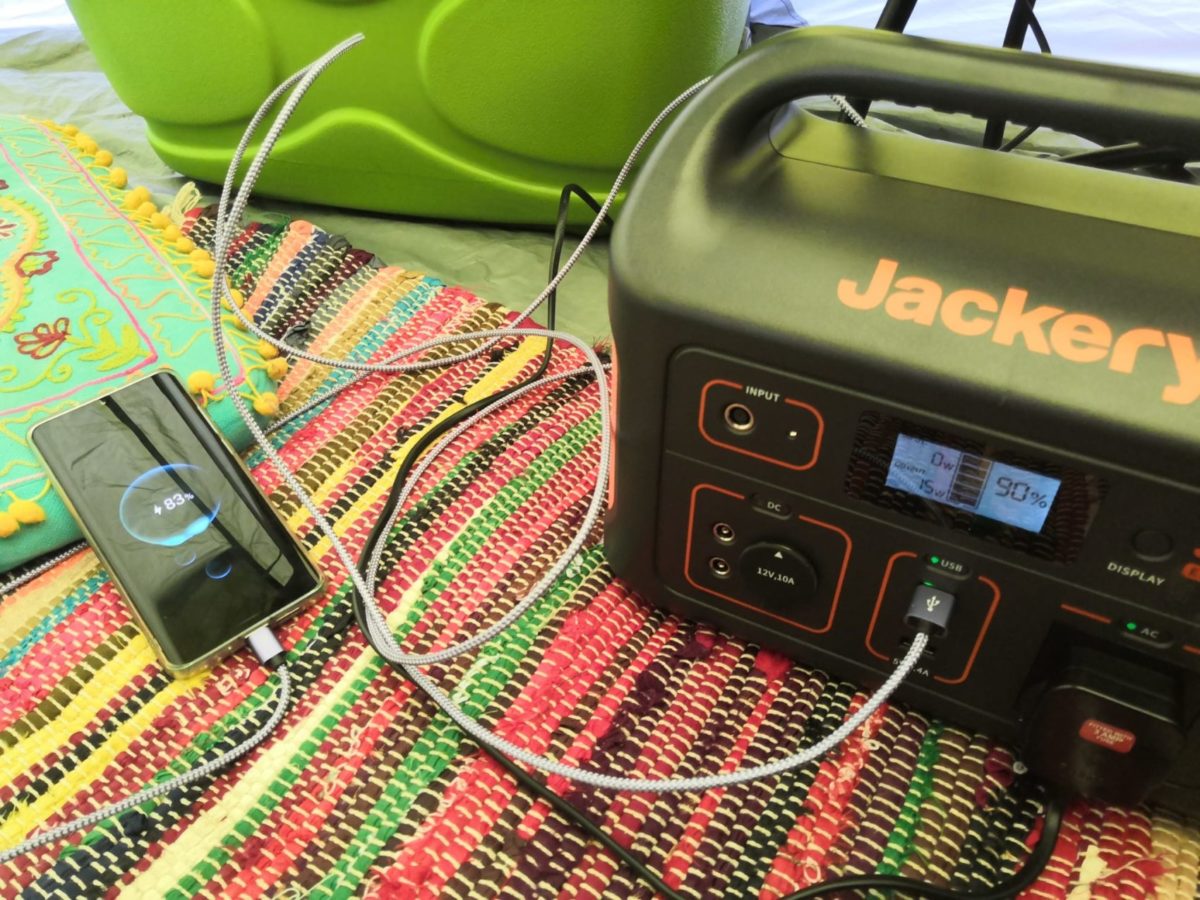

Solar panel performance
We received the Explorer 500 during autumn, which here in the UK means short, dreary days with very little sun and the sun we do get isn’t particularly strong at this time of year, so as far as fully testing the solar panel goes, it’s fair to say the conditions haven’t been the best.
On a dull day in November the input we got was hovering between 1-2w, whilst on a sunny day in mid-October, we achieved a more impressive input of 4-5w.
On one gloomy early November camping trip we had a smartphone and a Nintendo Switch plugged in to charge and the combined draw was 12w, whilst at the same time, we managed to get a solar input of 2w.
We will be updating this review with more solar panel performance details next Spring/Summer, as drawing firm conclusions on the solar panel performance based on late autumn/winter testing conditions alone is unfair.
Pros
- Compact and highly portable
- Excellent capacity
- Clear LED display that shows both power draw and input
- The carry bag makes an excellent and highly recommended add on
- Extremely well designed
- Can be used for at-home emergencies and in the garden (e.g. in the shed)
- Extremely quiet operation, especially when compared to a generator
- Ideal for phones, tablets, laptops, electric lights and pretty much anything that can be powered by USB
- Enough power to make a few days of working off-grid from a laptop a real possibility
- 2 year warranty for extra peace of mind
Cons
- The solar panel isn’t fully waterproof so it can’t be left outside of the tent when you go out for the day, overnight ready for sunrise etc.
- The power station needs to be protected from extreme temperatures, so when used in summer inside a tent, you may need to ensure it’s inside the insulated carry bag or kept in a cooler, shaded area
- It’s quite bulky with a fair heft to it
The verdict


Practicality 4/5
Performance 4.5/5
Looks 5/5
Value 4/5
Overall Rating  (4 / 5)
(4 / 5)
Using the solar panel, we still found that even in late autumn, we got a consistent input of around 2w-4w from the panel; enough to keep the power station topped up and to allow us to keep our mobile phones and tablet fully charged during weekend camping trips which barely depleted the power station battery.
Everything works together beautifully and the design of the Explorer 500 is superb, it feels sturdy and has clearly been well thought out.
At over £500 the Jackery 500 Power Station is a serious investment but it is keenly priced next to other competitors and for avid campers and off-grid glampers, together with the portable solar panel it’s an incredible bit of kit, with only a couple of minor drawbacks (see cons above).
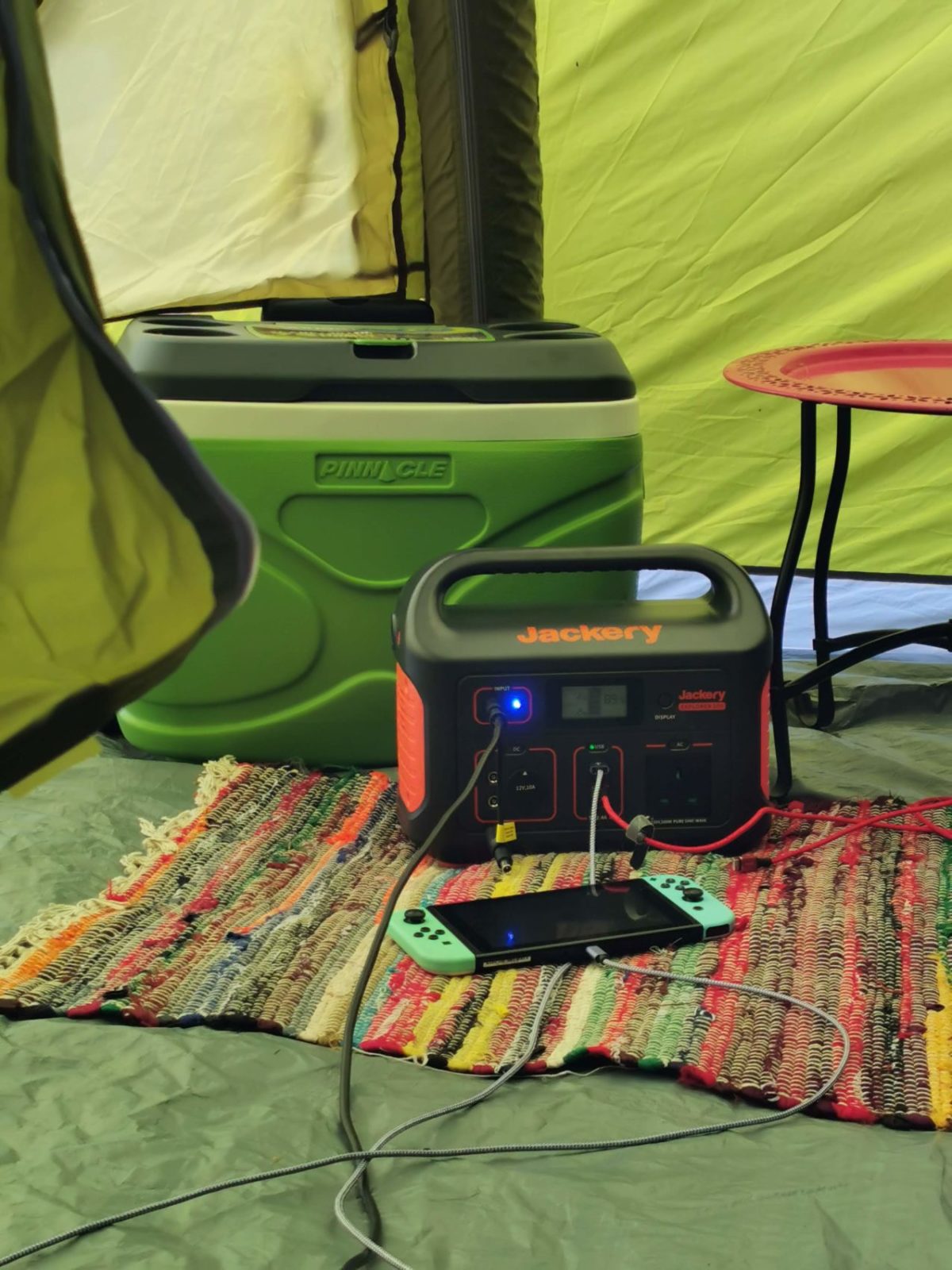

The solar panel which isn’t fully rugged and waterproof, means that It can’t be left outside of your tent, van, shed or glamping accommodation unless it’s a dry day. This results in missing out on early morning sunshine and needing to bring the panel in before going out for the day in case it rains, rather than being able to leave it charging.
That said, everything works together beautifully and the design of the Explorer 500 is superb, it feels sturdy and has clearly been well thought out. The LED panel very clearly shows you the draw of all devices that you’re powering, as well as the input from the solar panel (when plugged in) which makes it easy to balance your power use.
Final thought
The Explorer 500 provides reliable off-grid power, is portable, well designed and keenly priced – an excellent bit of quality kit you really should be considering if you’re looking for a solid, high-capacity power station.
DISCLOSURE | Thank you to Jackery who supplied the featured products to us to test. We were not paid to write this review.
Where to next?
- GADGETS | Reliable Power for Camping from The HUBi 10k Solar Power Hub – Long Term Test
- GEAR | Powapacs ION Portable Solar Powered Camping Power Pack – Review
- CAMPING | Power Free Campsite Slow Cooking With The Wonderbag




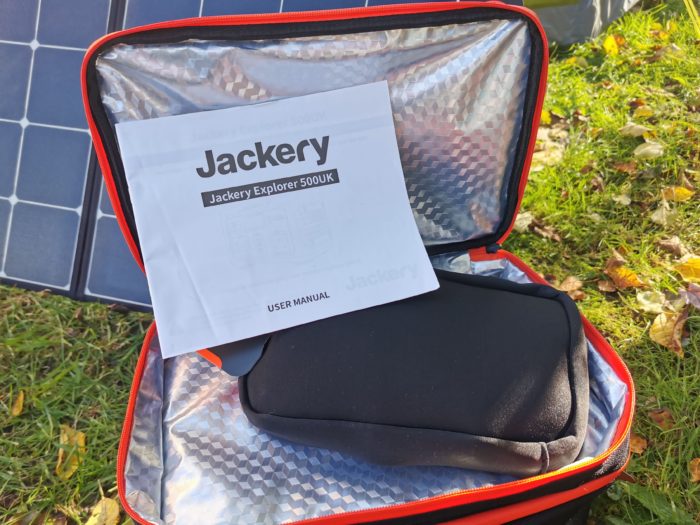
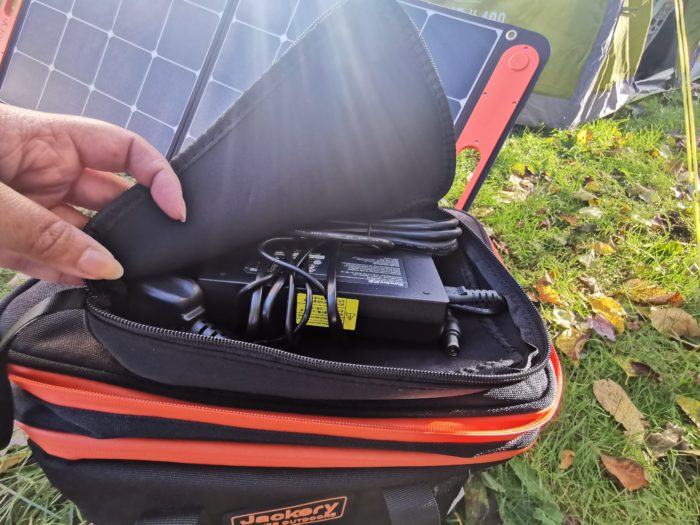
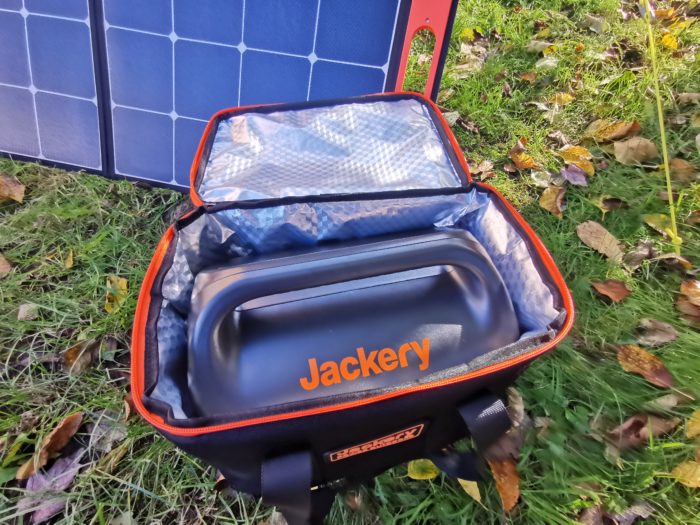
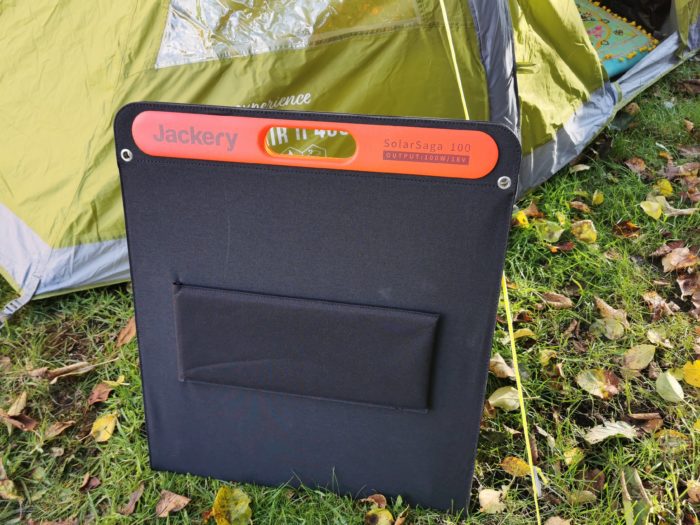
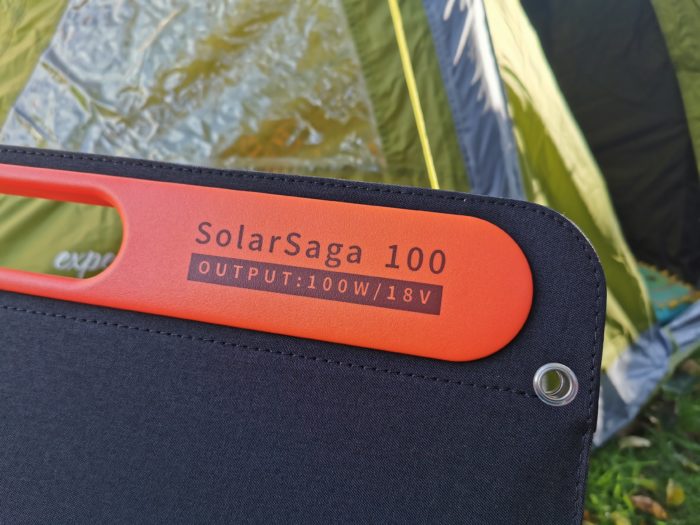
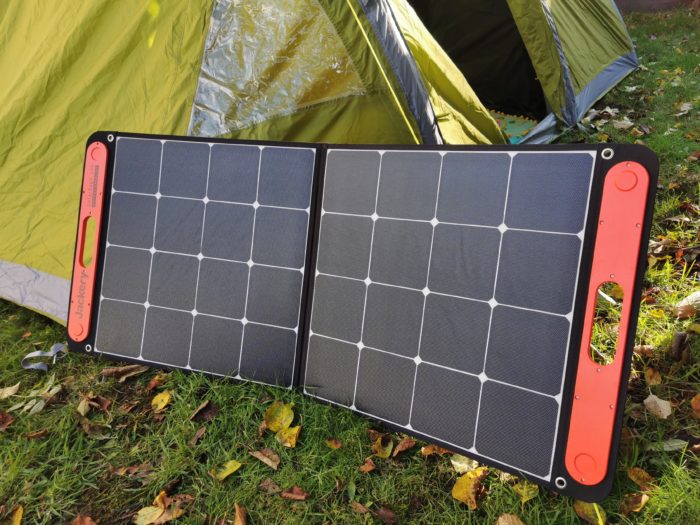
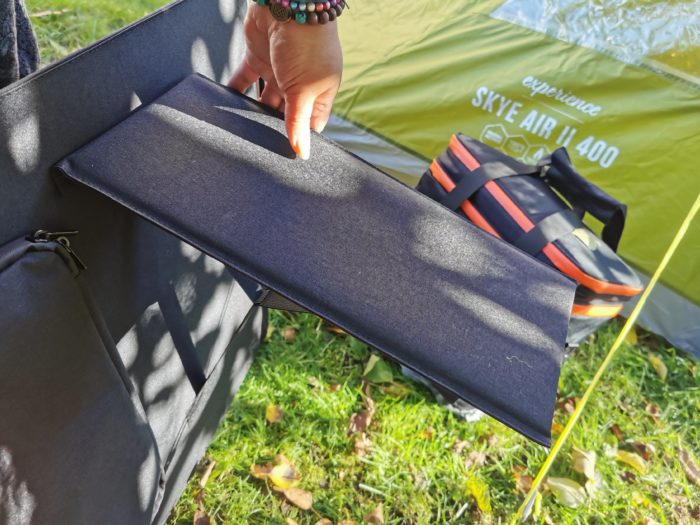























![CAMPING | Here’s How To Stay Warm In Your Tent – Warm Camping Tips [Updated 2024]](https://www.campingwithstyle.co.uk/wp-content/uploads/2024/02/shell0816_photorealistic_realistic_photo_of_the_inside_of_a_c_dd26c3c4-c779-4081-85b0-72e66a81b03b_1-320x230.png)

![GEAR | The Best Warm Sleeping Bags For Spring Camping Trips [Updated March 2024]](https://www.campingwithstyle.co.uk/wp-content/uploads/2024/02/10-best-warm-sleeping-bags-2024-320x230.png)




